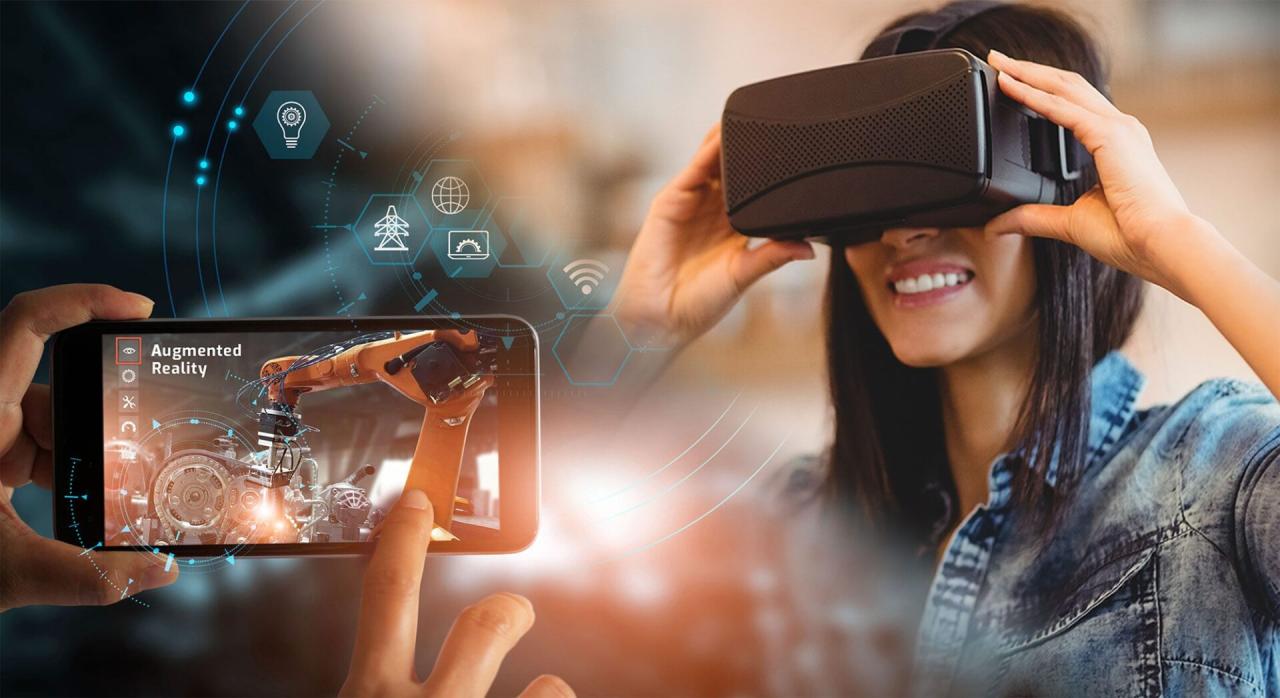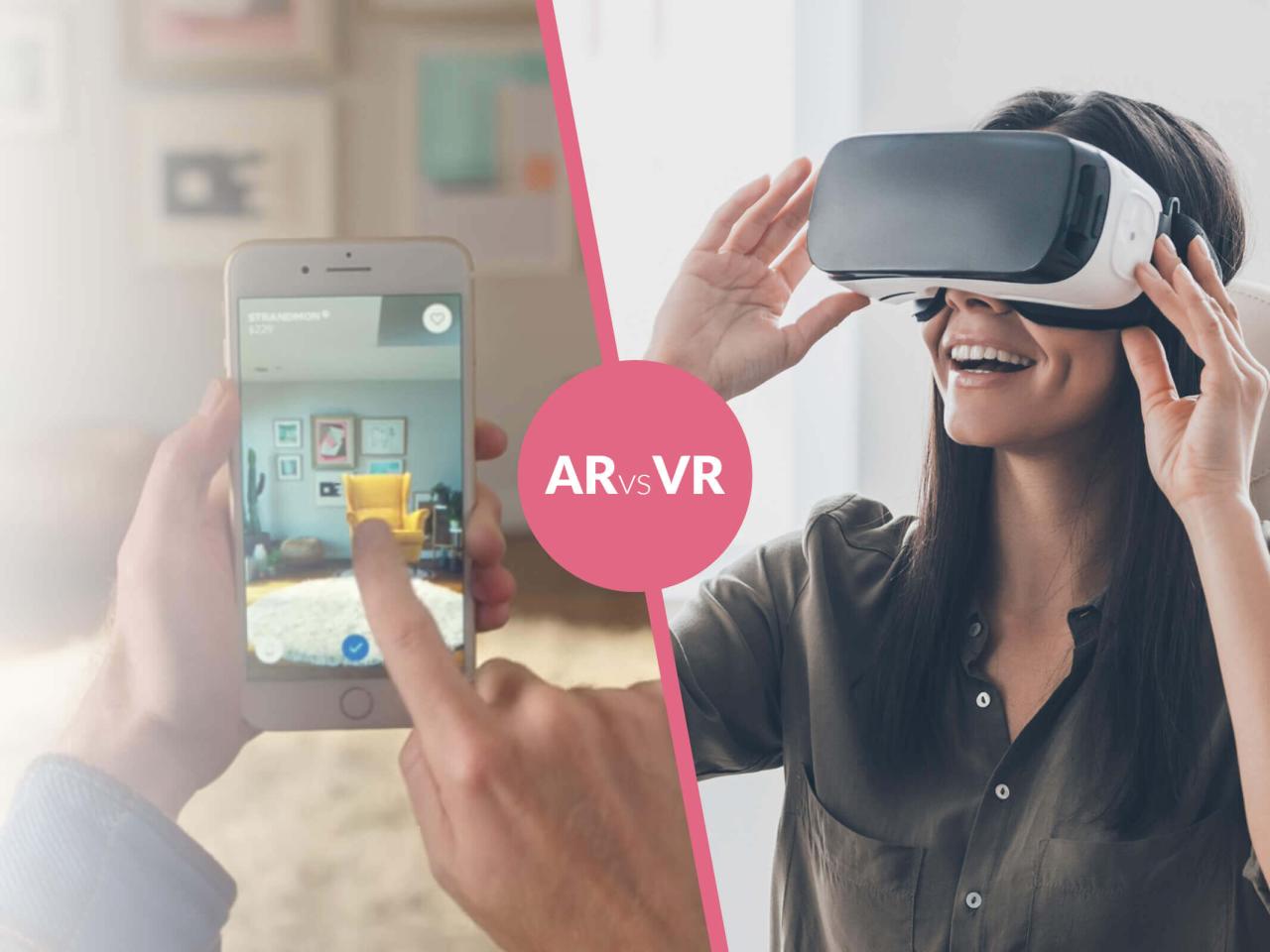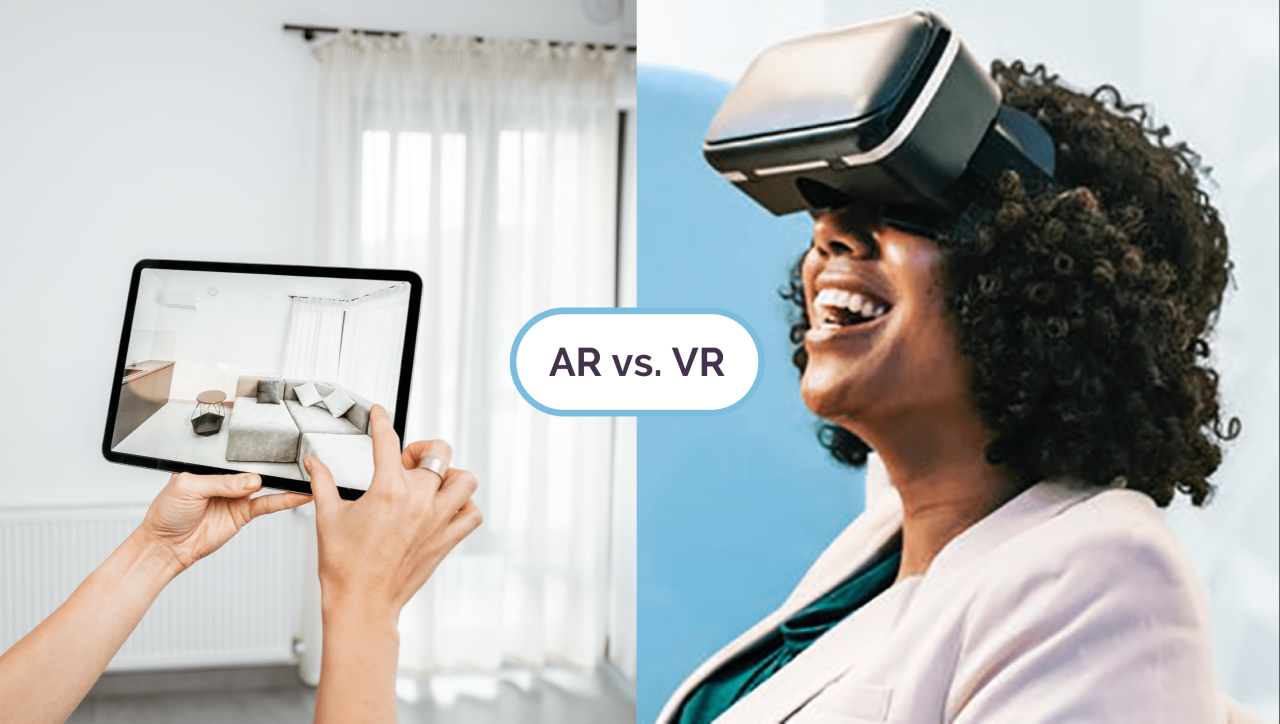Augmented reality (AR) and virtual reality (VR) software are rapidly transforming how we interact with the digital world. From immersive gaming experiences to innovative applications in healthcare and education, AR/VR technologies are pushing the boundaries of what’s possible. This exploration delves into the market analysis, technical development, user experience design, and diverse applications of this transformative software, examining its potential and challenges across various industries.
We will investigate the core technologies driving AR/VR development, including rendering engines and tracking systems, while also addressing the complexities of optimizing performance and ensuring intuitive user experiences. The discussion will encompass security and privacy concerns, future trends, the role of artificial intelligence, and the essential development tools and frameworks.
User Experience (UX) in AR/VR Software: Augmented Reality (AR) And Virtual Reality (VR) Software

Creating intuitive and engaging user interfaces is paramount for successful AR/VR applications. Poor UX can lead to user frustration, abandonment, and ultimately, failure. Therefore, understanding the key principles and common pitfalls is crucial for developers. This section will explore the critical aspects of UX design in the context of AR and VR, highlighting both best practices and common issues.
Effective UX design in AR/VR necessitates a deep understanding of the unique challenges and opportunities presented by these immersive technologies. Unlike traditional 2D interfaces, AR/VR interfaces must consider spatial awareness, hand tracking, and the user’s physical presence within the virtual or augmented environment. This necessitates a departure from traditional UI/UX principles and a focus on natural and intuitive interactions.
Augmented reality (AR) and virtual reality (VR) software are rapidly evolving, demanding significant computing power. This high demand necessitates careful consideration of the environmental impact, which is why the development and deployment of these technologies are increasingly aligning with sustainable practices like those promoted by Green cloud computing. Ultimately, responsible hosting choices will be crucial for the continued growth and success of AR and VR software.
Key Principles of Intuitive and Engaging AR/VR User Interfaces
Intuitive navigation, clear visual feedback, and minimal cognitive load are essential for creating positive user experiences. A well-designed AR/VR interface seamlessly integrates with the user’s environment, providing information and functionality without disrupting the sense of immersion. This is achieved through careful consideration of several key principles. For example, visual cues should be used effectively to guide users through the interface, and interactions should feel natural and responsive. Minimizing the number of steps required to complete a task is also crucial. The overall experience should be designed to be both informative and enjoyable.
Common Usability Issues in AR/VR Software and Solutions
Several recurring usability problems plague AR/VR applications. These issues often stem from a lack of understanding of the specific challenges inherent in these environments. Addressing these issues is critical for improving user satisfaction and adoption.
A common problem is motion sickness. This can be mitigated through careful consideration of camera movement and the use of techniques such as teleportation instead of continuous smooth movement. Another issue is the lack of clear visual feedback, which can leave users feeling disoriented or confused. This can be addressed by incorporating clear visual cues and providing haptic feedback where appropriate. Finally, complex controls can overwhelm users. Streamlining interactions and providing intuitive controls are key to resolving this.
User Persona: The Casual Gamer
Let’s consider a user persona for a hypothetical AR/VR gaming application.
Name: Alex
Age: 28
Augmented reality (AR) and virtual reality (VR) software are rapidly evolving, demanding scalable and flexible infrastructure. This is where the efficiency of Cloud-native development becomes invaluable, allowing for seamless updates and resource allocation. Ultimately, this approach ensures AR/VR applications remain responsive and performant, meeting the growing demands of users.
Occupation: Software Engineer
Interests: Video games, technology, outdoor activities.
Needs: Alex wants an engaging and immersive gaming experience that doesn’t require extensive setup or complex controls. He values intuitive gameplay and high-quality graphics. He prefers shorter gaming sessions due to time constraints. He is tech-savvy but doesn’t want to spend hours learning complicated mechanics.
Preferences: Alex prefers games with a strong narrative and challenging puzzles. He enjoys cooperative gameplay but also appreciates the option for solo play. He appreciates clean, visually appealing interfaces and responsive controls. He is concerned about potential motion sickness and prefers experiences that minimize this risk.
Security and Privacy Concerns in AR/VR Software

The immersive nature of augmented and virtual reality technologies presents unique security and privacy challenges. The collection and processing of vast amounts of user data, coupled with the potential for malicious actors to exploit vulnerabilities in the software and hardware, necessitate a proactive approach to risk mitigation. This section will explore potential threats and Artikel strategies for building secure and privacy-respecting AR/VR applications.
The integration of AR/VR with other technologies, such as location services, biometric data capture, and internet connectivity, expands the attack surface. Data breaches, unauthorized access, and malicious software injection are all significant concerns. Furthermore, the potential for tracking user movements and activities within virtual environments raises serious privacy implications. Mitigating these risks requires a multi-faceted strategy encompassing secure coding practices, robust authentication mechanisms, and user-centric data handling policies.
Data Privacy Risks in AR/VR Applications, Augmented reality (AR) and virtual reality (VR) software
AR/VR applications often collect sensitive user data, including biometric information (eye tracking, facial expressions), location data, and potentially even personally identifiable information (PII). This data can be misused for identity theft, targeted advertising, or even physical harm if location data is compromised. Effective data minimization strategies are crucial, collecting only the data strictly necessary for the application’s functionality. Furthermore, robust encryption and anonymization techniques should be employed to protect user data during transmission and storage. Transparency regarding data collection practices and user consent mechanisms are essential for building trust and complying with relevant privacy regulations such as GDPR and CCPA.
Security Vulnerabilities in AR/VR Software and Hardware
Malicious actors could exploit vulnerabilities in AR/VR software to gain unauthorized access to user data or even control devices remotely. This could involve injecting malware through compromised software updates or exploiting weaknesses in the application’s security architecture. Hardware vulnerabilities, such as compromised sensors or insecure communication protocols, also pose a significant risk. For example, a vulnerability in a headset’s tracking system could allow an attacker to monitor a user’s movements and activities in the real world. Regular security audits, penetration testing, and the implementation of secure coding practices are essential to mitigate these risks.
Mitigation Strategies and Best Practices
A comprehensive approach to security and privacy in AR/VR development requires a combination of technical and procedural measures. This includes employing secure coding practices to prevent vulnerabilities, implementing robust authentication and authorization mechanisms to control access to sensitive data, and using encryption to protect data both in transit and at rest. Regular security updates and patching are also crucial for addressing newly discovered vulnerabilities. Moreover, a strong emphasis on user privacy, including transparent data collection policies and user consent mechanisms, is vital for building trust and ensuring compliance with relevant regulations.
Checklist for Secure AR/VR Software Development and Deployment
Prior to launching any AR/VR application, a thorough security assessment is vital. The following checklist summarizes key best practices:
- Conduct regular security audits and penetration testing.
- Implement robust authentication and authorization mechanisms.
- Employ strong encryption for data in transit and at rest.
- Minimize data collection, only collecting data strictly necessary for functionality.
- Anonymize and aggregate data whenever possible.
- Implement secure coding practices to prevent vulnerabilities.
- Develop a comprehensive data privacy policy and obtain user consent.
- Regularly update software and address vulnerabilities promptly.
- Educate users about security and privacy risks.
- Comply with relevant data privacy regulations (GDPR, CCPA, etc.).
Future Trends in AR/VR Software Development

The convergence of advanced technologies is rapidly reshaping the landscape of augmented and virtual reality software. We’re moving beyond novelty applications towards deeply integrated, immersive experiences that will transform how we interact with the digital and physical worlds. This evolution will be driven by both technological leaps and evolving user demands for more realistic, intuitive, and impactful experiences.
The next generation of AR/VR software will be characterized by increased realism, improved interactivity, and seamless integration with our daily lives. This will necessitate advancements in areas such as haptic feedback, eye-tracking, and more sophisticated rendering techniques to create truly believable virtual environments and enhance the perception of augmented overlays in the real world. The increasing affordability and accessibility of AR/VR hardware will also fuel this growth, making these technologies available to a broader audience.
Impact of 5G and AI on AR/VR Software
5G’s high bandwidth and low latency are crucial for delivering high-fidelity AR/VR experiences without lag or interruptions. This allows for the streaming of complex 3D models and high-resolution video in real-time, enabling more detailed and immersive virtual worlds. Imagine a surgeon performing a complex procedure guided by a high-resolution holographic overlay streamed directly from a remote expert, all possible with the speed and reliability of 5G. Similarly, AI will play a vital role in enhancing the user experience. AI-powered features like realistic character interactions, personalized content recommendations, and advanced scene generation will make AR/VR applications more engaging and adaptive to individual user preferences. For example, an AI-powered AR application could dynamically adjust the level of difficulty in a training simulation based on a user’s performance, providing personalized feedback and improving learning outcomes.
A Conceptual Next-Generation AR/VR Software Platform
This platform, codenamed “Immersia,” will be built on a modular architecture, allowing developers to easily integrate new features and functionalities. Key features include:
- Advanced Spatial Computing: Immersia will leverage advanced spatial mapping and tracking technologies to create highly accurate and persistent virtual environments that adapt dynamically to the real world. This means that virtual objects will seamlessly interact with real-world objects and spaces, creating truly blended realities.
- Haptic Feedback Integration: Immersia will support advanced haptic feedback systems, allowing users to feel textures, forces, and other physical sensations within the virtual or augmented environment. This will enhance immersion and realism, particularly in applications like gaming, training, and design.
- AI-Powered Personalization: Immersia will utilize AI to personalize user experiences, adapting content, interactions, and difficulty levels based on individual user preferences and performance. This will create more engaging and effective applications across a range of industries.
- Cross-Platform Compatibility: Immersia will support a wide range of AR/VR headsets and devices, ensuring accessibility and broad adoption across different platforms and operating systems.
- Secure and Privacy-Focused Design: Data security and user privacy will be central to Immersia’s design, incorporating robust encryption and user consent mechanisms to protect user data and ensure responsible data handling.
Immersia’s modular design will allow for rapid innovation and customization, enabling developers to build highly specialized applications for various sectors, from healthcare and education to entertainment and industrial design. The platform will also foster a thriving ecosystem of developers and content creators, driving continuous improvement and expansion of AR/VR applications.
Augmented and virtual reality software represents a significant leap forward in technological innovation, impacting numerous sectors and reshaping how we interact with information and our environment. While challenges remain in areas such as security and user experience optimization, the potential benefits are vast and continuously evolving. As technology progresses, we can expect even more immersive and impactful applications of AR/VR software, transforming industries and enhancing our daily lives.
